Cardinal Wiseman School - Ground peppercorn

Not many will readily be familiar with what BSF means in educational jargon. It's 'Building Schools for the Future', a Government funding scheme essentially to upgrade or replace outdated school buildings. It kicked off in the wave of Millennium good intent and ceased existence in 2010 under the then Secretary of State for Education, Michael Gove. Cardinal Wiseman, one of the last schools to benefit from the scheme, got a £24 million facelift because of it and, today, looks every bit 21st century. However, one thing was still missing for the 2000 pupils there, and conspicuously so.
Charlie Pettifer, who looks after all the school's facilities, welcomes me to the impressive looking school. The absence of term-time hurly burly makes talking easy and he describes enthusiastically what has since filled this gap in its infrastructure. He's been in charge of things for twenty years and has seen huge changes to how the school looks and is proudest of what he calls "the icing on the cake". He explains what he means.
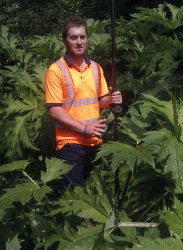
"For all outdoor games activities, they'd have to troop half a mile down the Greenford Road towards Southall to use Council park space there.
There have even been times when they couldn't get on these because travellers had made a temporary home there. It was an abiding frustration for all of us.
"Something that the school has always aspired to is now a reality though, and I can't tell you what a joy it is."
In truth, pupils did have access to a 'green' site at the rear of the school, just about a hectare all told. It didn't belong to the Cardinal Wiseman, but was London Borough of Ealing land. For a peppercorn rent of £25 a year, the school had permission during the summer term to set up picnic benches, and it was used as a break time recreation area. This was never anything approaching even the lowest grade of sports facility though, but it was better than nothing - just about.
Taking the field on as a proper sports facility had been an aim of successive headmasters and, in 2009, pipedreams became a genuine possibility when the Council gave support to the idea of the school developing and maintaining it as a sports field. In a time of mounting local government budget constraints, even basic upkeep of this difficult stretch of land was a cost it was keen to shed. It was very undulating and there were significant health and safety issues, so it would be no easy task. It suited both the Council and the school to see if a way could be found to effect such a change of use.

"There were so many obstacles to overcome," he said. "Local nature conservation pressure alone was a major stumbling block. Nesting birds, endangered species, and tree replanting, you name it. We had to give so many assurances. We needed advice on all manner of issues."
Planning conditions for the change to the site actually meant proper documented safeguards and even improvements to the surrounding environment and ecology were essential. The school, therefore, funded the research and production of a 'Biodiversity Enhancement Plan'. A firm of ecological specialists was appointed to carry this out, and the plan that followed included measures to protect trees and root systems during construction and additional planting, biodiversity measures to enhance the site's value and even protecting the slow worms that were there. The subsequent addition of bat boxes, a pond and a nature reserve show how seriously the school took its responsibilities.
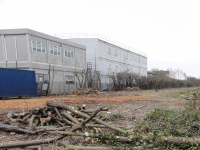
"Everything we did had to go through the Borough Council, but we got everything we needed," said Charlie. "They couldn't have been more helpful and, very generously, let us have use of it for the next twenty-five years at a nominal £50 a year."
The first step was to get help on what kind of sports field was possible and how it might be achieved. MD of specialist contractors Turfdry, Melvyn Taylor, recalls his reaction on first seeing the site, having been called in, on spec, to 'get the lie of the land'.
"We came to see Charlie and, looking at the land in question as it was, it was impossible to envisage any kind of plan at all," he told me over the phone. "I'd never seen anything quite like it before. It was obviously going to be a real challenge, being so overgrown. We carried out an initial topographic survey and our recommendation was to get a detailed design fully specified before approaching contractors. Without a very specific brief, it would be like comparing apples with pears."
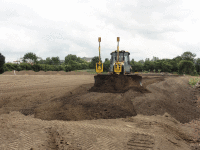
They, in turn, gave the school names of contractors suitably able to handle such a project. Included in the tender was the school's own facilities management company, but it was Turfdry who, in Charlie's words "came up with the best solutions for the site", and got the tender.
The land had once been a brickfield back in the 1930s and land filling had caused it to be far from even. Overcoming this, plus a distinct slope away from the school towards the nearby River Brent, were key elements of the specification. Only major earthworks would turn it into a sports field. Turfdry began its work on the site in March 2013. Its mission was to transform this council-owned land - in truth derelict and overgrown - into a recreational and sports area for the school. An 80m x 50m football pitch was to be the centerpiece of the development.
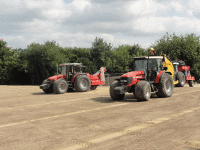
A practical virtue of the site was that it was standalone and completely fenced off. Turfdry were conveniently able to get daily access via the neighbouring Ealing Council depot too, so their work caused no disruption to school life whatsoever.
Phase One of the project, the enabling works, involved the total clearance of all vegetation and trees, and this had to be completed ahead of bird nesting. A huge task was the removal of rampant Giant Hogweed by glyphosate spraying on a grand scale and stockpiling off site, a tedious, yet necessary operation. There was also some re-growth of dreaded Japanese Knotweed and, before any earthworks could be contemplated, this had to be isolated and eradicated. For this, an area of 120 square metres was dug out to a depth of 500mm and the soil transported and formed into a fenced-off mound on the boundary of the site for treatment by a specialist controller.
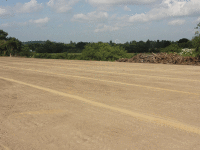
Phase Three was principally drainage installation. Turfdry is the sole UK approved installer of Hydraway Sportsdrain, an American drainage system for sportsfields, based on 25mm x 150mm geotextile columns rather than piping. Narrow trenches, just 50mm wide, down to 300mm were excavated to enable installation of these at 4-metre centres across the site, followed by back-filling with aggregate and piping. SAME tractors with low-pressure tyres and AFT 75 laser-controlled disc trencher with high-lift soil conveyor were the main items of equipment used.
A tank for Rain Train irrigation was also installed and 100 percent ryegrass turf laid in autumn 2013. Turfdry had done its work and, in the following summer term, the school staged its first 'at home' athletics and volleyball.
"Turfdry were excellent from day one," said Charlie. "It's been a successful, albeit long journey, and I've really enjoyed being part of it. It's made a massive difference to everyone here, pupils especially. Instead of being an enclosed set of buildings, fine and modern as they are, we now have our own outdoor facility."

The school's governing body must take a lot of credit for backing the project and finding the money for it, yet budgets generally remain very tight and there is an on-going reliance on outside support. Lack of equipment, for winter games especially, is the next hurdle to overcome.
Permanent football posts would be impractical on such a small sports area needed for a diversity of other purposes, and the school had been looking forward to having a set of mobile football goals for its first season on its own pitch. It was an unfulfilled promise by a manufacturer however.
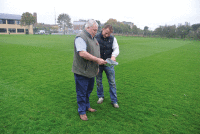
Charlie Pettifer is the man to contact if you want to help the school find the net, email PettiferC@wiseman.ealing.sch.uk
Contributors to the Cardinal Wiseman School project:
Design: Wynne-Williams Associates, Pump Lane, Pleshey, Chelsmsford, Essex CM3 1HF
Main contractor: Turfdry Limited, Redwood House, Woodville Road, Hartshorne, Swadlincote, Derbyshire DE11 7ET
Ecological consultants: Grontmij, 36-40 York Way, London N1 9AB
